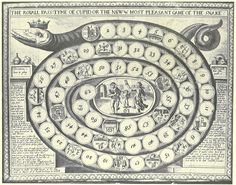Rediscovering Gyan Chaupar: The Ancient Board Game That Inspired Snakes and Ladders

Dice games have been played in India since the Shramanic period, with game boards and pieces discovered in the Indus Valley civilisation. Mohenjo-daro, Harappa, Lothal, Kalibangan, Alamgirpur, and other sites have discovered ivory and bone artifacts of various shapes and sizes, some with dots and regarded as “dice” and/or “gaming pieces”.

Dice playing is also described in a hymn in the Rig Veda, where the player laments the loss of his fortune and bride. The Vedic people utilized Vibhidaka (little brown nuts) for dice. This ceremonial gambling custom continues today, with Hindus playing a new version of the game at Diwali. The Skanda Purana mentions Shiva and Parvati playing dice. This scenario is beautifully depicted in a sculpture in the Ellora Caves in Aurangabad. The Jain Gyan Chauper is referenced in the Dhanapala, a 10th-century work by Rishabhapanchashika. It was typically played on painted cloth called patas.
A game similar to Snakes and ladder, Gyan Chaupar, literally means the “game of Knowledge.” It has local variations as well like “Parampada sopanam”, Bengali adaptation “Golok dham” and Tibetan version “Sa nam lam sha’. The Victorian version of the game include “Kismet” boardgame, “Virtue rewarded and vice punished” (1818), and “New game of human life”. Gyan Chaupar looks like Snake and Ladders but it has a different meaning altogether. To begin with, it is not a race-game. Secondly, the game doesn’t end on square 100, but it has 72 blocks, and the person could play it again and again until they reached Vaikuntha after journeying through many rebirths and corresponding human experiences.

Every square in the game signifies a moral action, a celestial location or a state of being, all of which are important in the Karmic journey. For example: Plane of light, plane of truth, plane of sensuality, delusion, greed, earth, rivers Ganga and Yamuna etc. It is believed that a recent version of the game was invented by the great Marathi Saint Gyaneshwar (1275-1296). British historians and archaeologists provide an exhaustive list of 44 board games found in India. It includes some variations of Gyan Chaupar with 128 squared Vaishnav Gyan Chaupar, 84 squared Chaupar, dating back to 15th century.
The roots of game are evident in its playing. Beginning on “utpatti” or “origin”, the player can move to “maya” or “illusion” (square 2), “krodh” or “lobh” – “anger” and “greed” respectively (squares 3 and 4), and ascend higher towards salvation via the ladders in the squares that represent “daya” or mercy (square 13) or “Bhakti” or devotion (square 54). Bhakti will transport the player directly to Vaikuntha and deliver them from the cycle of rebirths, and the game will end there. This is hardly surprising given that the game was allegedly conceived by a prominent figure in the Bhakti Movement. If the player throws the dice beyond square 68, the long snake on square 72 returns the player to Earth, and the rebirth cycle repeats.

The Muslim form of thew game was prevalent during the Mughal Empire, beginning in the late 17th or early 18th century. It is a 100 square Gyan Chauper, representing the number of god’s names, or 101 if Allah’s throne is counted. It’s written in Arabic or Persian. There are seventeen ladders and thirteen snakes. It depicts direct ladders from fana fi Allah to the throne. Later, with minor changes, it became known as “Shatranj-al-Arifin” or “The chess of Gnostics.”
Gyan Chaupar, the age-old Indian “game of knowledge,” imparted moral and spiritual lessons in addition to being entertaining. It was a symbolic route to enlightenment rather than a race, in contrast to Snakes and Ladders. Diverse philosophies were reflected in regional variations. Gyan Chaupar is a monument to India’s rich past, where moral lessons were combined with entertainment, and a reminder of the educational value of games.


